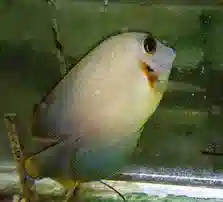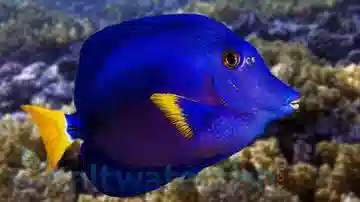Expert Only
Achilles Tang
Acanthurus achilles
(1 Reviews)

Expert Only
Achilles Tang
Acanthurus achilles
(1 Reviews)
{{ item.name }}
Size: {{ item.extra_field_3 }}
${{ getFormattedPrice(item.saleprice) }} ${{ getFormattedPrice(item.price) }}
To join the waiting list, click here
Free Shipping
With
$199.00
or more in Marine Life.
More details...
Achilles Tang Care Facts
| Care Level: | Expert |
|---|---|
| Temperament: | Semi-Aggressive |
| Diet: | Omnivore |
| Reef Safe: | Yes |
| Minimum Tank Size: | 180 gallons |
| Max Size: | 10 inches |
Achilles Tang
The Achilles Tang, native to the Indo-Pacific's warm waters, dwells among coral-rich reefs and rocky structures at depths of 3 to 98 feet, foraging for algae and small invertebrates. Reef-safe and typically peaceful, they reach 7 to 10 inches and can live 10 to 15 years in captivity, requiring a diet rich in marine algae and supplemented with pellets and frozen foods. While not commonly bred through aquaculture, they are responsibly sourced to ensure healthy specimens for aquariums. Tank mates should be chosen carefully to avoid territorial conflicts, with a minimum tank size of 180 gallons recommended. Water conditions should mirror their natural habitat, with pH levels between 8.1 and 8.4, salinity between 1.020 and 1.025, and stable temperatures of 74-78°F. Compatible tank mates include species like Blue Hippo Tangs, Naso Tangs, Flame Angelfish, Coral Beauty Angelfish, and Cleaner Wrasse.
Habitat
Achilles Tangs thrive in the warm waters of the Indo-Pacific, inhabiting coral-rich reefs and rocky outcroppings at depths of 3 to 98 feet. They forage for algae and small invertebrates among coral formations and rocky structures.
Reef Compatibility
Generally reef-safe, Achilles Tangs are valuable for controlling algae growth in reef aquariums. While primarily herbivorous, they may nip at corals if dietary needs are unmet.
Size and Lifespan
Growing to 7 to 10 inches, Achilles Tangs can live 10 to 15 years in captivity with proper care, offering enduring enjoyment for aquarists.
Diet
Their diet should mirror natural grazing behavior, consisting of high-quality marine algae sheets, seaweed, and a mix of marine pellets and frozen foods.
Availability
While not often bred through aquaculture, reputable sources like Saltwaterfish.com provide responsibly sourced specimens.
Compatibility
Generally peaceful, but territorial, Achilles Tangs require careful consideration when selecting tankmates to avoid conflicts.
Sexual Dimorphism
Minimal sexual dimorphism makes distinguishing between males and females challenging based on visual characteristics.
Coloration Changes
From juvenile orange with a black vertical bar to adult vibrant blue with an orange patch around the gill plate, their coloration transforms uniquely as they mature.
Temperament
While typically peaceful, Achilles Tangs may become territorial in limited space or when they perceive threats.
Tank Requirements
A minimum tank size of 180 gallons with stable water conditions mirroring their natural habitat ensures their well-being: a pH level between 8.1 and 8.4, a salinity level of 1.020-1.025, a stable temperature between 74-78°F (23-26°C), and moderate water flow to simulate ocean currents.
Common Names
Also known as Achilles Surgeonfish or Red-tailed Surgeonfish.
Compatible Tank Mates:
Here are five specific species that can make suitable tank mates for your Achilles Tang:
- Blue Hippo Tang (Paracanthurus hepatus)
- Naso Tang (Naso lituratus)
- Flame Angelfish (Centropyge loriculus)
- Coral Beauty Angelfish (Centropyge bispinosa)
- Cleaner Wrasse (Labroides spp.)
Expert Only: Items designated as expert only require special care such as a species specific environment, special diet or care, and an expert level, experienced aquarist. Not for beginners. Expert Only items qualify for our live arrival guarantee only, and are exempt from our extended 8 day guarantee.
Beautiful Achilles Tang swims in out of the rock formation in the saltwater fish tank. Healthy and energetic after acclimation.
Reviewed by: Orlando Asumata on Dec. 31, 2021








